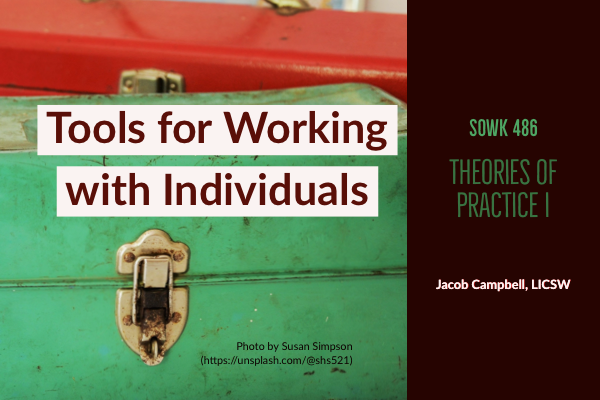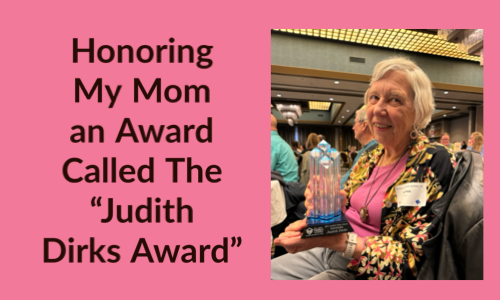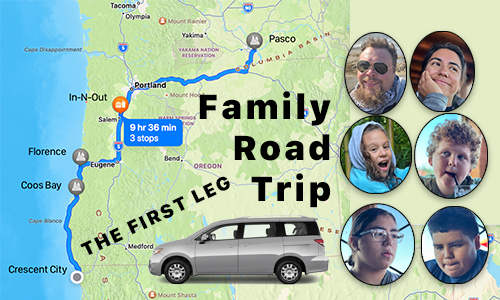Fall 2023 SOWK 486w Class 02 Weekly Email
Email sent on to SOWK 486

I hope that you are all doing well and have had a great first week of school.
Unit Introduction and What You Will Learn
Week two is a cross-sectional look at some perspectives, frameworks, and theories commonly used in social work. It should assist in gaining awareness about the difference between these ways of thinking discussed in social work literature. We will look into the following:
- Perspectives, theories, and frameworks
- Systems theory
- Ecological perspective
- Strengths perspective
- Solution-focused brief therapy
After this session, students will be able to articulate the difference between perspectives, theories, and frameworks. Students will also have knowledge about a couple of theoretical options for their integrative paper due later in the semester.
Unit Assignments
This week, your assignments include attending class and doing some reading. You have a couple of readings from some journal articles. There is no reading quiz that must be completed. Related to talking about strengths perspective, I also share the model described by Graybeal (2001) and looking for strengths using ROPES and would encourage you to read that article as well.
Unit Resources
The readings for this week are not out of the textbook and are being provided to help supplement the discussion. We won’t directly be talking about them during class. Green and McDermott (2010) provide some context and understanding related to the person in the environment. De Jonge and Miller (1995) give helpful ideas for how to draw out strengths from clients, which is an essential aspect of implementing strengths perspective. The hope of these readings 1 is to introduce you to some peer-reviewed journal articles and to some of the theories they discuss. It can help develop your integrative paper due at the end of the semester. Next week your readings focus some on the orienting perspectives in social work, and these are also a great resource.
We ran out of time last week to talk about academic writing and APA formatting. We will spend some time talking about that. As I described in Week 1’s Course Page. I’ve uploaded the lecture video there (as well in the lecture video section of this course if you want to look back at it). I am including the same links from last week. The following is some links to tools we will be talking about:
In finding references, it is important in academic writing to obtain the best quality source we can find (meaning the source with the most authority and closest to the topic). Peer-reviewed journal articles are important references to be searching for and using in your writing. Finding these it is often hard to find by just “Googling.” Use the following:
I recommend finding and using reference management software to keep track of articles you read and use in your writing. Some of the software that I mention are as follows:
Academic writing can be challenging. Many students find using APA to be intimidating, but it is very learnable. Along with their style guide, their website is a great resource. They have lots of examples and helpful descriptions. Two documents, in particular, are beneficial:
The presentation for Fall 2023 SOWK 486w Week 02 - Practice Related to Perspectives, Frameworks, & Theories
If you are also interested, I have a video discussing using Zotero to keep my references updated. You can see it at Transdisciplinary Literature Reviews using Zotero, How I Manage References [YouTube Video].
A couple of years ago, when I was teaching SOWK 459, Social Science Research Methods, I had a lesson Week 04 - Theoretical Frameworks - What is behind the research that we complete, which had some good information to dive a bit more into various theories within social work.
You can find the recording of all of our classes in the lecture videos for this course.
Reference
Green, D., & McDermott, F. (2010). Social work from inside and between complex systems: Perspectives on person-in-environment for today’s social work. British Journal of Social Work, 40(8), 2414–2430. https://doi.org/10.1093/bjsw/bcq056
De Jonge, P., & Miller, S. D. (1995). How to interview for the client’s strengths. Social Work, 40(6), 729–736. https://doi.org/10.1093/sw/40.6.729
Graybeal, C. (2001). Strengths-based social work assessment: Transforming the dominant paradigm. Families in Society: The Journal of Contemporary Social Services, 82(3), 233-242. https://doi.org/10.1606/1044-3894.236
To Do Lists
- Attend class on Wednesday at 5:30 PM
- Complete readings for Green and McDermott (2010) and De Jonge and Miller (1995). Optionally, the Graybeal (2001) article is also really good.
- Consider watching Transdisciplinary Literature Reviews using Zotero, How I Manage References [YouTube Video]
- Check out the other resources provided.
-
Please note that using the author’s names in the “text” of my discussion here is what an in-text citation is, and there are also reference list entries. This is what APA formatting looks like in writing. You will see it in your textbook and most journal articles you read as part of your ongoing studies. There is a link at the end of each reference. This is what is called a DOI number. It is helpful to find what article is being discussed and even put the material into software like Zotero or Mendeley. The
https://doi.org/url is not generally helpful for reading the article, as it usually takes you to the journal’s abstract page for the piece. Most journals cost, and you get access to them through the university library (unless it’s open access). I’ve turned the title of each article into a link attached to the file so you can download and read the article. ↩




